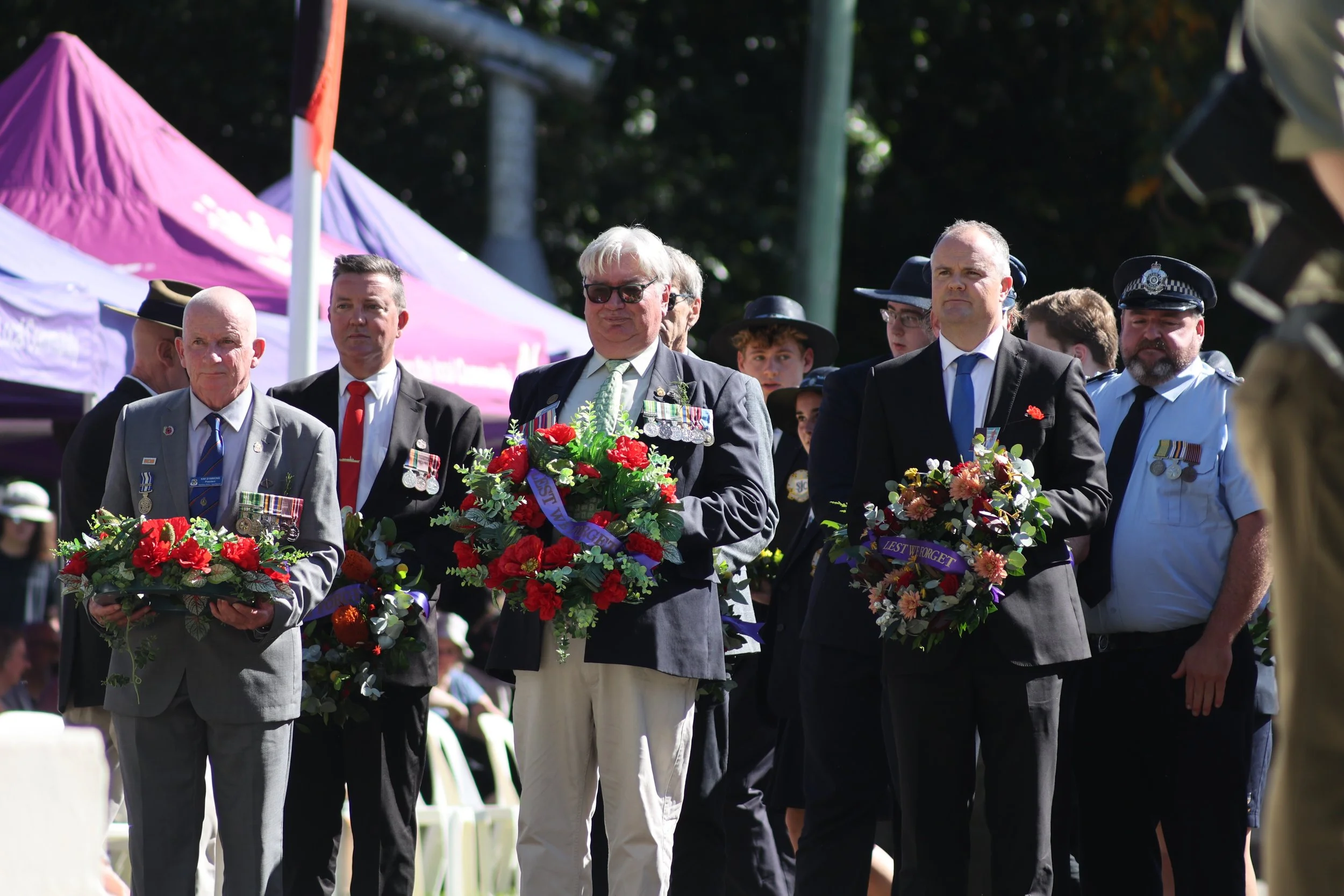Heroic digger’s remarkable story of WWI survival
Lieutenant Colonel Ian Stoddart’ delivers the address at Nambour’s ANZAC Day Service.
From Pozières to Villers-Bretonneux:
by Cameron Outridge
He was gassed. He was blown up. He fought in the bloody battles of Pozieres and Villers Bretonneux.
And on ANZAC Day, 2024, his grandson, Lieutenant Colonel Ian Stoddart, retired veteran of the Royal Australian Engineers, delivered a solemn address in his memory.
The former Nambour High School (Nambour State College) student recounted a poignant tale from his family history. He told the service about his grandfather, Tom, and the enduring legacy of the ANZAC spirit. The tribute provided a stirring reminder of the sacrifices made by those who served their nation during conflict.
Lt Col Stoddart said Tom wasn’t born in Australia but moved out with his family in the early 1900s as a young lad.
“He had a job with the Adelaide Steamship Company as a shipping clerk. He was six foot tall, athletic, and when the war came up, Tom was an early enlistee. He was posted as a stretcher bearer to the First Army General Hospital. Prior to deployment his girlfriend at the time said she’d wait for him. He was on the first troop ship out with a number of others and they got to Egypt where they all trained.
“Tom didn’t go to Gallipoli. The hospital remained in Egypt and his job was to carry the wounded down from the ships. After Gallipoli, they went to France.
“And due to the amount of people that were wounded and killed, he transferred across to the infantry into the 12th Battalion. In July, 1916, the day before his battalion was to march down to the Somme, he wrote his mother a letter.
Four unidentified soldiers inspect the ruins of Villers-Bretonneux (AWM E02193).
“In that letter he said that he believed that the cause was just, and that he was there to fight a war to end all Wars. Just an aside, both his sons and his grandson have subsequently been to war, so off he marched to the Somme, to the Battle of Pozières (23 July – 3 September 1916).
“In the six weeks of that battle, there were more casualties than the eight months of Gallipoli. The Australian divisions suffered 23,000 casualties, of which 6800 of them died or died of wounds. Tom’s Battalion was only in the battle for eight days. Of a unit of around 700, they had 446 casualties. Tom was one of those.
“He was blown up by an artillery shell. He was evacuated out and sent back to the UK to recover. After a time getting over his injuries, he came back to France, back into the same battalion. He rose to the rank of Corporal. He was then awarded a battlefield commission.
He was just the best of what was left.
“He was promoted Second Lieutenant and awarded the Meritorious Service Medal. Now, there was no more training. He was just the best of what was left. He continued on, got gassed, injured again.
“So again, he came back from the front lines, went back into another unit – the 51st battalion and fought at the Battle of Villers-Bretonneux. From there, he saw the end of the war. But that for Tom wasn’t the end of it. He was a good administrator and probably because he was a shipping clerk in civilian life, he was posted to the admin headquarters and he was responsible for the repatriation of all the soldiers and airmen back to Australia.
“He didn’t come home until 1920, nearly two years after the war, as a Captain. Now Tom’s character epitomised what is now known as the spirit of the ANZACs. He was cheeky. He was certainly a bit of a rascal, but he was loyal, he was brave, and he was a good mate.
“Above my medals, I wear two RSL badges, one’s mine and the other’s Tom’s. Tom was one of my heroes. He was also my grandfather. Thank you.”



